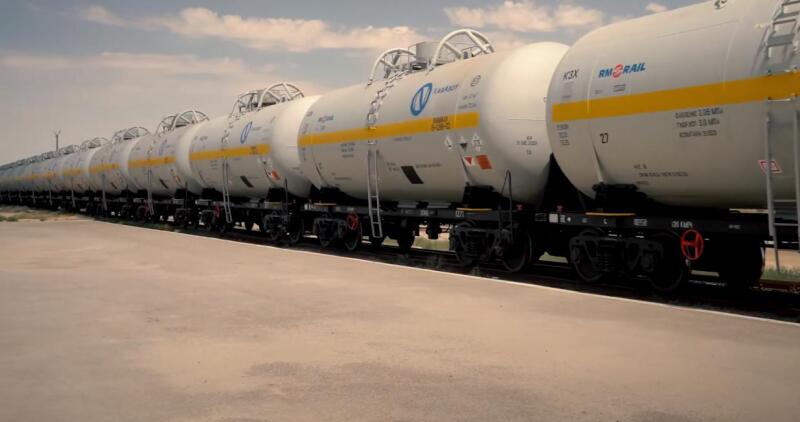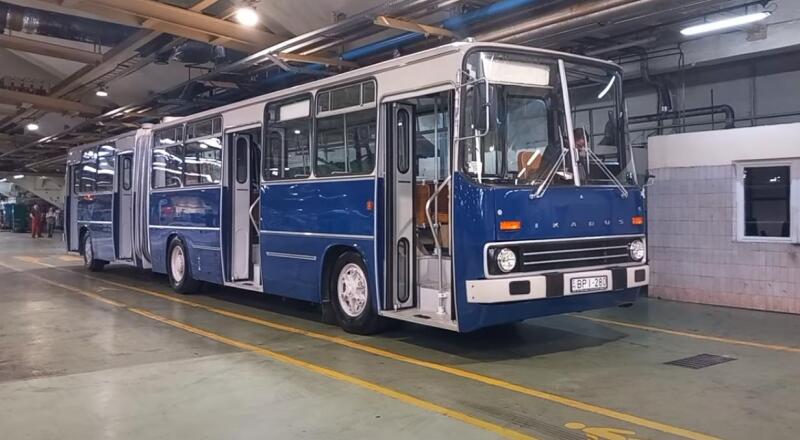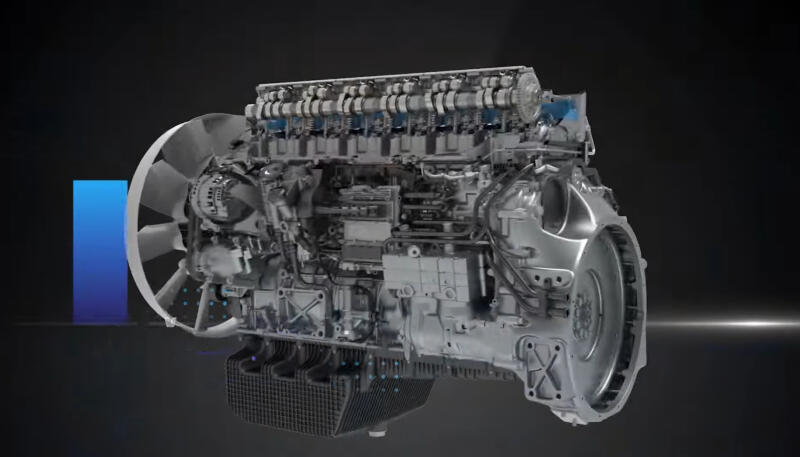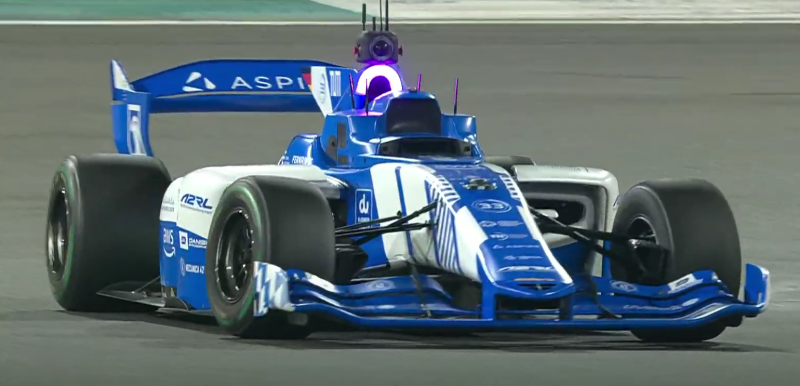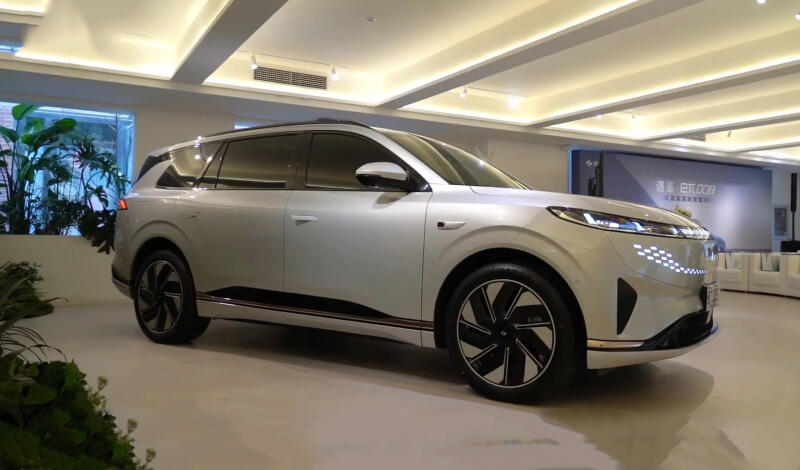However, nothing was said about equipping the concern’s products with such internal combustion engines. Apparently, there are serious reasons for this. And yet the topic of using ammonia as a fuel, no, no, is still being raised. It is worth taking a closer look at this compound, which contains nitrogen and hydrogen, which are “popular” on the planet.
History of use
The most common area of application of the substance is agriculture. When natural reserves of fertilizers in the form of natural nitrates and guano began to dry up in the world, the need for a cheap catalyst for good harvests suddenly arose. The “genie out of the bottle” was released by chemists Haber and Bosch, who proposed an inexpensive method for obtaining the desired substance by combining nitrogen and hydrogen under pressure. For which they were awarded the Nobel Prize.
 Refueling trailed equipment to add anhydrous ammonia to the soil. Photo: YouTube.com
Refueling trailed equipment to add anhydrous ammonia to the soil. Photo: YouTube.comIn everyday life, we see this substance in the role of bleaching compounds, ammonia, and fertilizer for the garden. Well, what about fuel? The idea is not new: back in 1943, at the height of World War II, the Belgians, due to a lack of diesel fuel, poured a mixture of ammonia and gasifiers into bus tanks. Public transport has driven 10 thousand km using hybrid fuel.
In the 1960s, the X-15 rocket plane, powered by ammonia, set records for achieving maximum altitude and speed.
Another attempt to use this substance as one of the components of fuel was made in South Korea already in our time: in 2013. Then there was no goal to make a completely “ammonia” car. They simply decided to remake it so that the role of fuel would be played by a mixture of 30% gasoline and 70% of the described compound. This made it possible to preserve the existing fuel equipment - modifications were minimal. But the Koreans were not the first here either.
In 2007, a car filled with a mixture of ammonia and gasoline drove from Detroit to San Francisco, covering a distance of 3851 km.
According to the developers, carbon dioxide emissions to the outside have been reduced by 70%. If at least a fifth of cars in South Korea were filled with such a mixture, pollution of the atmosphere with greenhouse gases (ammonia does not emit them) would be reduced by 15% per year. However, everything went quiet after that. The creators of the new internal combustion engine motivated this by the fact that this connection is too expensive, but they are “working on it.” Why is ammonia attractive for the automotive industry?
Advantages
There are quite a lot of them and the first one may seem unexpected to some. Ammonia can serve as an ideal storage facility for hydrogen, which acts as a fuel. Before use, it must be kept in tanks at -253°C under pressure. While ammonia is stored at -33°C.
 One of the most popular fertilizers is ammonium nitrate. Photo: YouTube.com
One of the most popular fertilizers is ammonium nitrate. Photo: YouTube.comThe latter has been used in global agriculture for a hundred years, so the infrastructure associated with the production and transportation of the product exists safely. The production volume on the planet is 180 million tons. There are corresponding terminals in 120 ports.
The head of CF Industries, one of the leading companies producing ammonia, noted: previously, humanity “sold the nitrogen” part of the molecule, today we have to deal with the “hydrogen component”.
The second plus is energy density. For liquefied hydrogen, this indicator is at the level of 8,5 MJ/l. And for the sodium-nitrogen compound this figure is 12,7 MJ/l. When compared with lithium-ion batteries found in electric cars, this parameter for ammonia is nine times higher. It is less flammable than gasoline or aviation kerosene, but is comparatively more economical. If we talk about internal combustion engines, there is also an interesting feature of ammonia - its detonation resistance. Octane number is 130 (research method).
 Schematic illustration of a plant for producing ammonia. Photo: YouTube.com
Schematic illustration of a plant for producing ammonia. Photo: YouTube.comAnd the main advantage of this chemical compound is its environmental safety. The use of ammonia in internal combustion engines will reduce harmful carbon dioxide emissions, which “provide” more than a billion cars traveling around the planet today. What about the disadvantages?
Negative sides
These include the well-known pungent odor of the compound. It can irritate the mucous membranes of the mouth and nose, respiratory tract, and cause coughing. On the other hand, it helps to instantly detect ammonia leaks even without any instruments. If we talk about harm to health, it is “better” than methanol four times. Yet ammonia is toxic to people and the environment. If it is to be used in an internal combustion engine, the sealing must be perfect.
 Ammonia is a harmful substance: liquidation of the consequences of a leak from a tank by rescuers. Photo: YouTube.com
Ammonia is a harmful substance: liquidation of the consequences of a leak from a tank by rescuers. Photo: YouTube.comAnother disadvantage is the aggressiveness of the substance, since it has alkaline properties. Ammonia will simply destroy all copper, bronze, and rubber parts in the engine. Another problem is poor ignition. This is solved by adding acetylene or hydrogen to the compound. If ammonia is used in diesel engines, the compression ratio will have to be increased to 35, and the temperature in the intake manifold - to +150°.
 Hydrogen for cars can be produced from ammonia. Photo: YouTube.com
Hydrogen for cars can be produced from ammonia. Photo: YouTube.comHowever, you can save your usual settings. But then you will have to add additives (dimethylhydrazine, amyl nitrate), which will reduce the compression ratio to 12-14. Another problem is that ammonia does not burn completely; the exhaust gases may contain toxic substances. Therefore, a post-treatment system will be needed.
The idea of ammonia-based fuel excites the minds of inventors: in 2021, patent RU2778415C1 was issued in the Russian Federation for “an internal combustion engine power supply system with ammonia-based hydrogen fuel.”
The best option is to find a cheap catalyst that will help the compound (it will act as a carrier) decompose into nitrogen and hydrogen, and only then use the latter as fuel. This is possible today. But the role of an assistant for splitting is played by iridium compounds, and this is very expensive.
Prospects
At present, ammonia production has reached impressive proportions. In terms of money, the global market for this product by 2025 is estimated at $81,42 billion. So far, no one wants to build cars with internal combustion engines running on ammonia on a large scale. The main obstacle is the danger of the substance to people and nature due to limited space in cities. Another thing is ships: ocean and sea spaces will help evaporate harmful compounds. In practical terms, MAN Energy Solutions, together with specialists from South Korea, are already building a tanker whose power plant will run on ammonia. Norway is not far behind: Equinor is converting its Viking Energy vessel to this fuel. The work should be completed this year.
 Japanese tugboat powered by ammonia. Photo: YouTube.com
Japanese tugboat powered by ammonia. Photo: YouTube.comJapan is “looking in the same direction”: in 2020, the NYK Line company announced that it plans to build a ship whose engine will run on ammonia. As for the use of the connection in aviation, the idea is still at the research stage, although in the 1960s, as already mentioned, there were attempts, and not without success.
 The X-15 rocket plane partially used ammonia as fuel. Photo: YouTube.com
The X-15 rocket plane partially used ammonia as fuel. Photo: YouTube.comLarge-scale use of pure ammonia in internal combustion engines is not yet possible. The compound can be used as a carrier of another type of fuel - hydrogen or as an addition to gasoline or diesel fuel. Research on the use of ammonia in automobile internal combustion engines continues all over the world - we just have to wait for the results.
